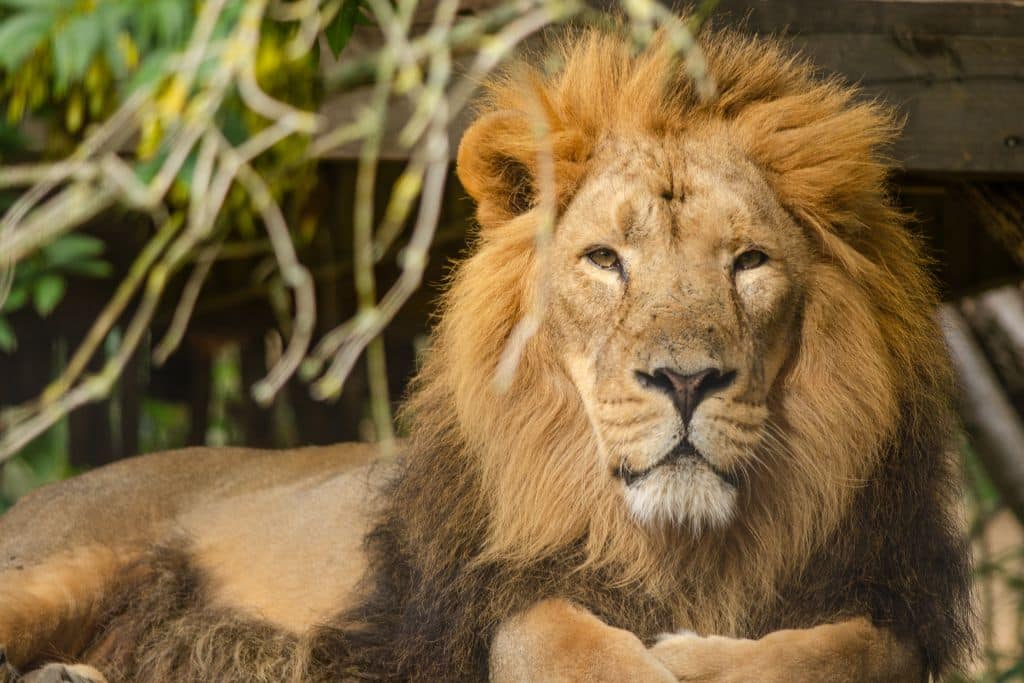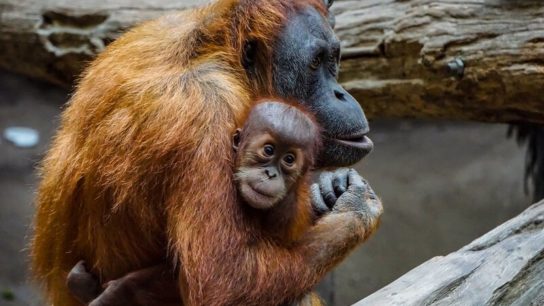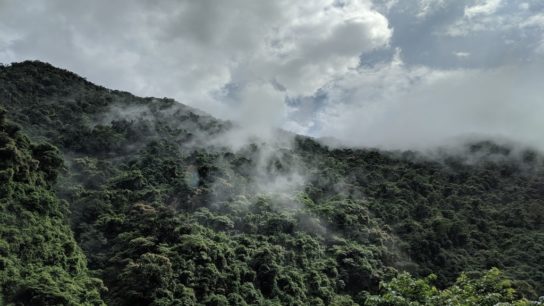In the past 50 years, the planet has experienced rapid growth of human population, development, and urbanisation, deforesting hundreds of million acres of forests across the globe along the way. As a result, wildlife is losing more habitats and food by the day. According to a 2020 analysis, the sixth mass extinction of wildlife on Earth is accelerating with more than 500 species of land animals on the brink of extinction that will likely be lost within the next two decades. As India is one of the most densely populated countries in the world, it comes as no surprise that human activity and land development are increasing rapidly. These are just 10 endangered species in India that are under threat and urgently need protecting.
—
10 Endangered Species in India
1. Bengal Tiger
Bengal tigers account for about half of the world’s total tiger population, 70% of which can be found living in India. Though this big cat is an adaptable animal that can live in various habitats including forests, mangroves and wetlands, and has the ability to cope with hot or cold temperatures, Bengal tiger populations have plummeted over the years. The animal has been endangered following decades of persistent poaching for its skin and body parts, trophy hunting, and severely reduced habitat from urban development. The species now live in just 7% of their historical habitat range, with fewer than 2,000 individuals left in the wild. In a densely populated country like India, human-wildlife conflict is also a contributing factor to its dwindling numbers.
2. Asiatic Lion
The Asiatic lion is about 10-20% smaller than its African cousins with a larger tail tuft and a distinct belly fold. As the name suggests, the Asiatic Lion was historically native across south-west Asia to eastern India. But now, the species’ entire population can only be found in India and restricted to the Gir National Park and environs in Gujarat. Listed as an endangered species by the International Union for Conservation of Nature (IUCN) since 2010, the Asiatic lion only has about 500-650 individuals left in the country. While the animal is mostly confined to the Gir Forest, many farmers still use crude and illegal electrical fences to protect their crops where lions often get caught up in it. Likewise, nearly 20,000 open wells dug by farmers in the area for irrigation have led to many accidental drownings of lions.

3. Snow Leopard
Much like the Asiatic Lion, snow leopards used to have much larger habitats and prowled across the mountain ranges of Asia. Now, they can only be found in Ladakh, Himachal Pradesh, Uttarakhand and the western and eastern parts of the Himalayas, with population numbers down to about 500 in India. Unsurprisingly, this drop is the result of human interference, namely animal poaching for its pelt and body parts, and a rapid decline of prey due to increasing domestic livestock, which depletes the high altitude pasture lands. Conflicts between remote communities and snow leopards have also been a threat to the species, as well as hydroelectric and mining projects, which reduces the leopard’s natural habitat. As female snow leopards tend to produce only one to two cubs once every two years, it also makes it harder for the species to recover its numbers.

4. One-horned Rhinoceros
Also known as the Indian rhinoceros, this animal is mostly found in India and the foothills of Himalayas. One-horned rhinoceros has been heavily targeted for their horns for decades, which allegedly have medicinal properties, and killed as agricultural pests. The population is also impacted by frequent flooding seasons, forcing rhinos to move to higher ground and outside of national parks, increasing risks of human-wildlife conflicts. These factors have consequently driven the population to near extinction at the start of the 20th century, dropping down to as little as 200 animals. But with the help of strict and targeted conservation measures, current population numbers have risen back up to around 3,700 in northeastern India and the Terai grasslands of Nepal, making it “one of the most successful conservation efforts in history”.
5. Blackbuck
Due to severe poaching – hunted especially in the princely states of India for their pelts – and habitat loss, the blackbuck, or Indian antelope, is now one of the most endangered species in India. In 1947, there were around 80,000 blackbucks. But that number had fallen to 8,000 in less than 20 years. Despite conservation efforts that help population numbers go back up to around 25,000, factors such as preying stray dogs – which India has one of the highest rates of – pesticides and moving vehicles all continuing threats to the species. You can find blackbucks in small herds in open grasslands, dry scrub areas, and thinly forested areas across India, and have been introduced in Argentina and the United States to help increase their numbers.
You might also like: 10 of the Most Endangered Species in the US
6. Lion-tailed Macaque
Endemic to the small and severely fragmented rainforests of Western Ghats of South India, the lion-tailed macaque is a recognisable monkey identifiable by its silver-white mane that surrounds its head. Estimates place the total wild population of the macaque around 4,000 individuals, and is projected to decline more than 20% in the next 25 years should threats like hunting, roadkills and habitat loss persist. These rare primates are mostly shy and tend to remain in the upper canopies of rainforest, which continues to dwindle due to deforestation and land clearing. The species’ easy access to human food is also changing their behaviours, driving the animal to spend less time foraging for food.

7. Resplendent Tree Frog
This mysterious frog species was only discovered in 2010 at the highest peak of the Western Ghats, and has a striking orange hue and several big glands covering its body surface. The resplendent tree frog is so rare that they can only be found in the Anamudi summit in Kerala within the Eravikulam National Park. Scientists estimate that there are only about 300 remaining animals and recommend top-priority conservation for this species.
8. Kashmiri Red Stag
The Kashmiri red stag has been listed as a critically endangered species by the IUCN for decades and is among the top 15 species of high conservation priority by the Indian Government. As a result, the species is now largely restricted within a 141 sq km area in Dachigam National Park. In the early 1990s, the number of red stags was estimated to be around 5,000 but dramatically decreased to about 150 in 1970, and around 110-130 in 2015. Habitat fragmentation, land encroachment for grazing, and very low fawn-female ratio are attributed to be the main causes behind red stag’s population decline. Many ongoing conservation drives are attempting to tackle these issues to help protect this critically endangered species in India.
9. Nilgiri Tahr
This endangered mountain goat species only has about 2,500-3,000 individuals remaining in the wild. Much like the other animals are on the list, wildlife poaching and habitat loss has led the nilgiri tahr to be contained within the states of Kerala and Tamil Nadu, covering less than 10% of their former range. But for these mountain goats, climate change is expected to be an even bigger threat. The animal lives in high-altitude mountainous grasslands and rocky cliffs of the Western Ghats, and is projected to become unsuitable habitats for the goats as global surface temperatures rise.
10. Indian Bison (Gaur)

The largest and tallest in the family of wild cattle, the Indian bison is an animal native to South Asia and South-East Asia but one that is severely threatened by wildlife poaching (for its meat, horns and medicinal products), shrinking habitats and food scarcity from the destruction of grasslands. Famously the inspiration behind the branding of the popular energy drink, Red Bull, the bison has unfortunately lost more than 70% of its population in many parts of their range. The gaur is listed as a vulnerable species by the IUCN and is protected by India’s 1972 Wild Life Protection Act, which calls for the reintroduction of native plants and regulation of indiscriminate cattle grazing around areas where the gaurs roam.
You might also like: 12 of the Most Endangered Animals in the World
This story is funded by readers like you
Our non-profit newsroom provides climate coverage free of charge and advertising. Your one-off or monthly donations play a crucial role in supporting our operations, expanding our reach, and maintaining our editorial independence.
About EO | Mission Statement | Impact & Reach | Write for us


















